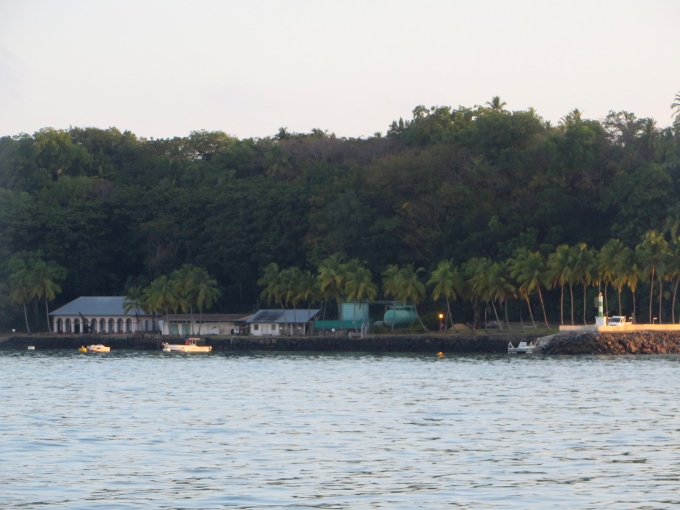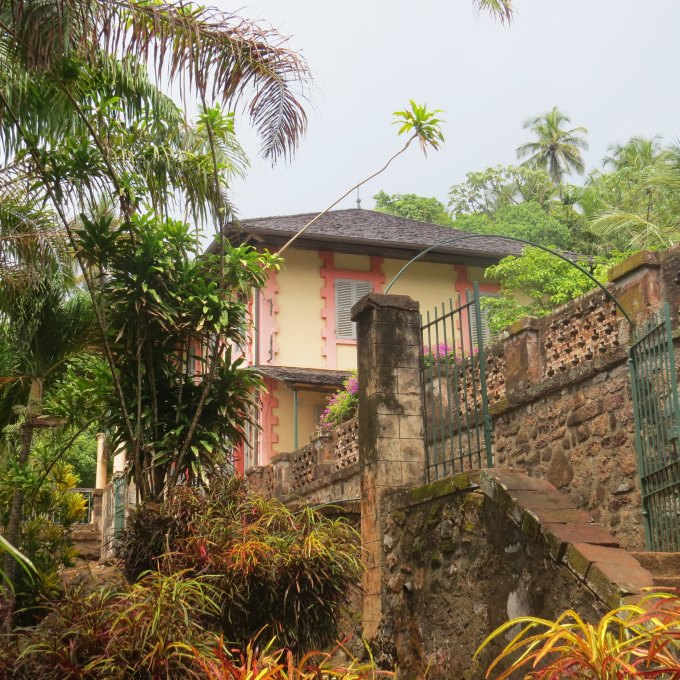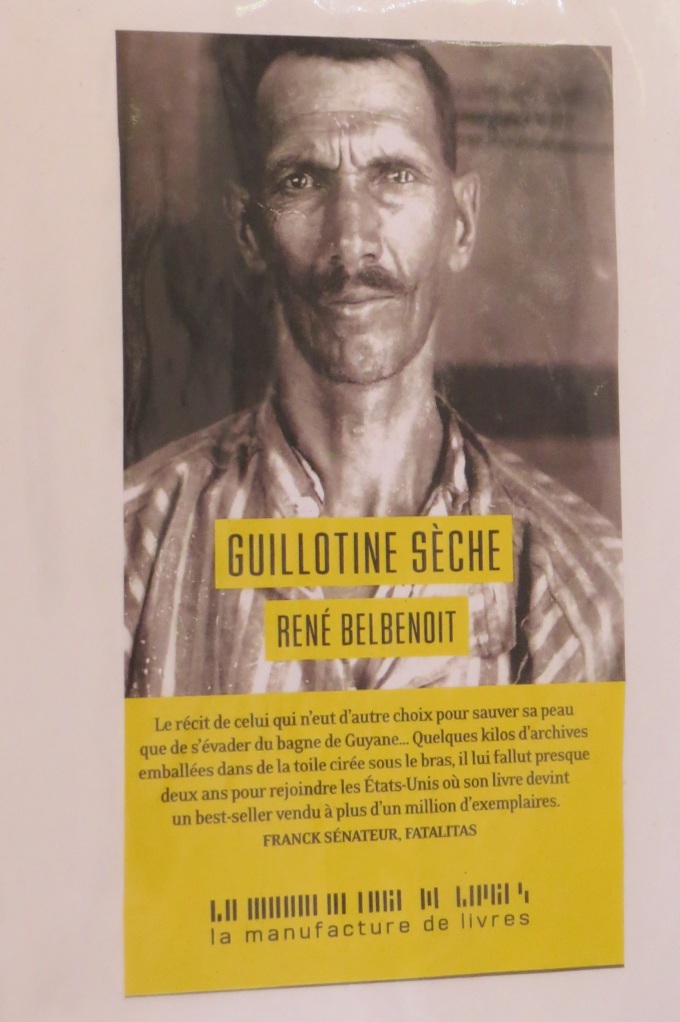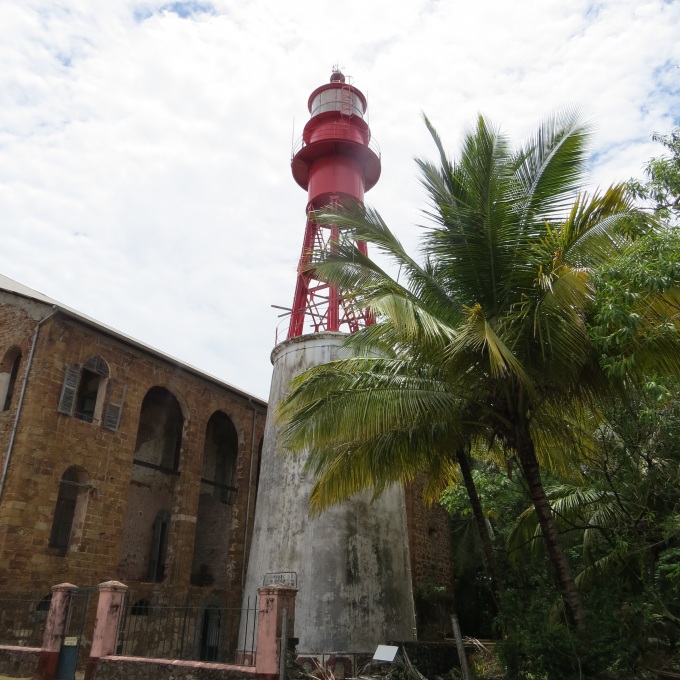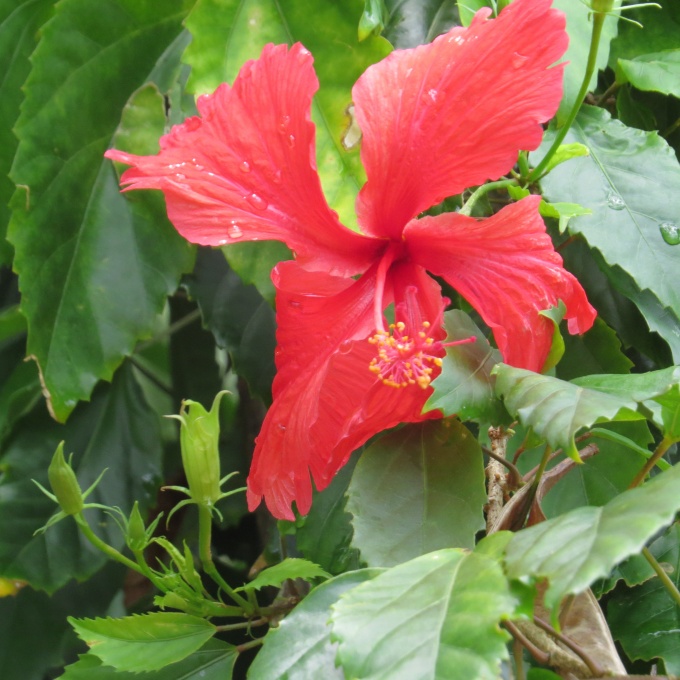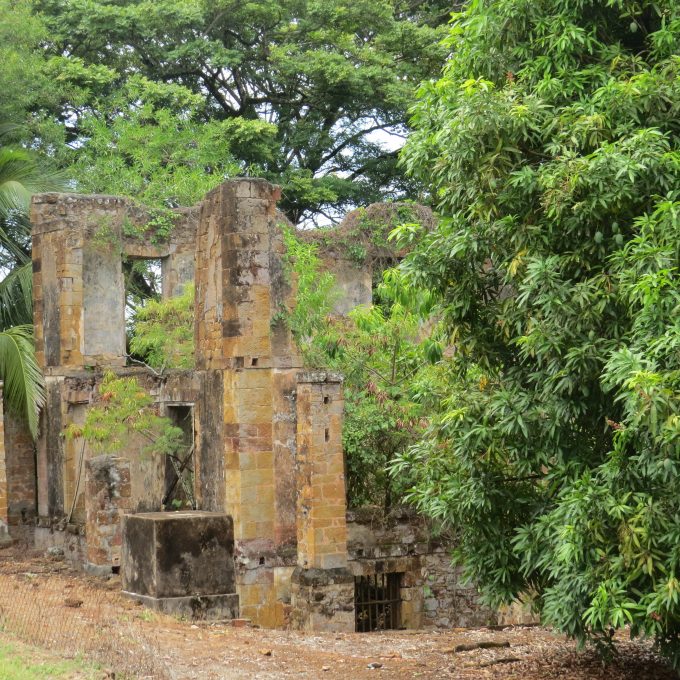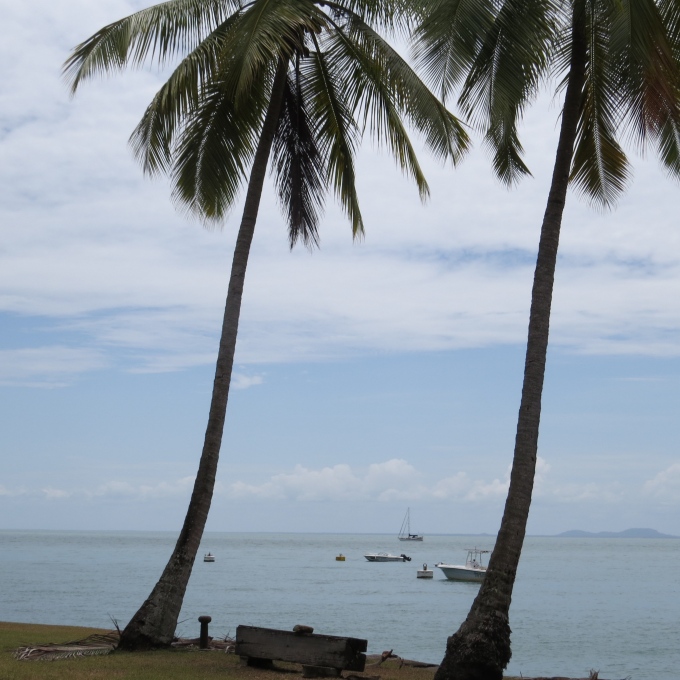No Salvation - Ile Royale
/Iles du Salut, French Guiana
We dinghied over to Ile Royale, the largest of the Salvation Islands, later in the day. Ile Royale was the “welcome center” for processing new prisoners. It was also the administrative center for the prison and the residences and social center for the prison staff and military were located here. Their facilities differed greatly from those of the prisoners. We had heard there was a Tourist Info office here, but found none. There was only one road leading along the shore and we followed it.
Once again, it was hot and steamy. When we walked in the shade of the dense foliage and palms, it was quite pleasant. In the direct sun, however, it was intense. Cicadas hummed a hot tune. There were not as many birds as I would have imagined. We saw some finches and a few colorful parakeets flitting around. There were terns and plovers down by the shore. There were, however, lots of agouti … red-rumped agouti, to be specific. Closely related to guinea pigs, these medium-sized rodents roamed all over the place and were not particularly disturbed by our presence.
We climbed a steep set of moss-covered stone steps to the area of the officer's quarters and the Commandant's house. One of the rooms housed an interesting display of information about the islands and its residents, providing a bit more insight into the islands and the French penal system.
We'd seen a sign for a restaurant and sure enough, we found it, up the path, a few hundred meters away. They served cold beer (Heineken) and took credit cards. Life is good. I thought I'd be adventurous and ordered a ti punch (pronounced tee-paunch), thinking it would be a fruity-type drink with a little rum. Au contraire, it was all liquor and undrinkable. We shared David's beer.
Some of the surrounding area and renovated buildings are now used as accommodations for guests on the island and are mingled with the ruins of the quarters for the old prison staff.
The church seemed out of place here in what was a hell for most of the residents.
An exhibit inside the church caught our attention. It told of the escape of Rene Belbenoit. Sentenced to life imprisonment for theft, he made five escape attempts and the last one was successful. In his book Guillotine Sèché (Dry Guillotine), he recounts a two year journey on foot through the snake-infested jungles of South and Central Americas to the USA. Supposedly, it was the publishing of his book and story that finally led to the closing of Devil's Island.
We walked past a heliport landing area which we were certain was no longer used. (We were proven wrong when we heard the whir of copter blades above Cups later that evening.) Nearby was the lighthouse that had produced the lights we'd seen on our arrival. Built in 1937, it was in rough shape.
We walked through another cemetery, which to our surprise, was a children's cemetery...so out of place here. This was not a family-type island. We walked through quietly, noting tiny little graves with weathered monuments to mark them.
We connected with the main trail around the island once again. We ambled along at a leisurely place, admiring huge red hibiscus that grew haphazardly along our path and provided bright contrast to the green of the thick foliage. Foliage, by the way, for which companies pay big money to have as potted plants in their lobbies.
We completed a tour of the perimeter of the island in about an hour. Just offshore, we saw a huge sea turtle dive just off the rocks and a handsome iguana sunned himself, oblivious to the waves which crashed behind him.
There were stone foundations and ruins all along our path, some barely visible midst the jungle growth. It looked as if some were being restored and others were left to disintegrate.
Back at the dinghy dock again, we could see Cups, bobbing in the gentle swell. Time to head back aboard, stow the dinghy and prepare for an early morning departure.


